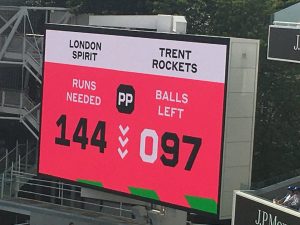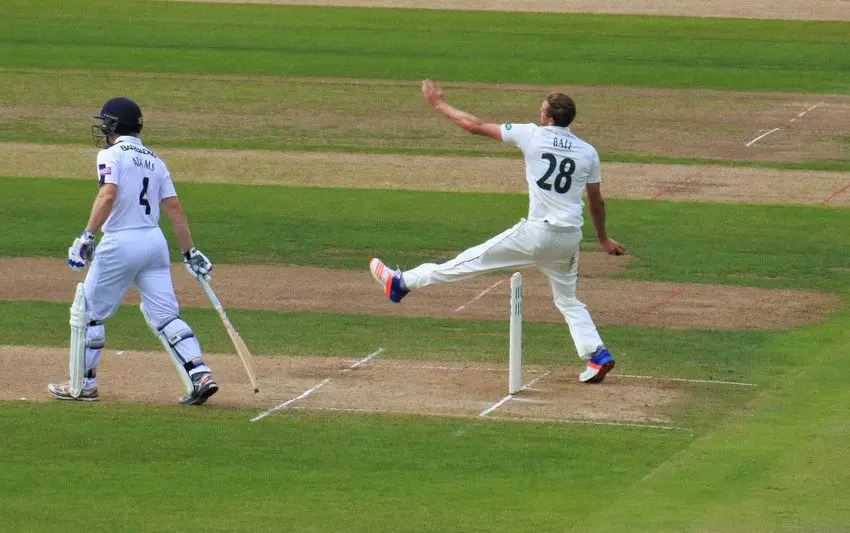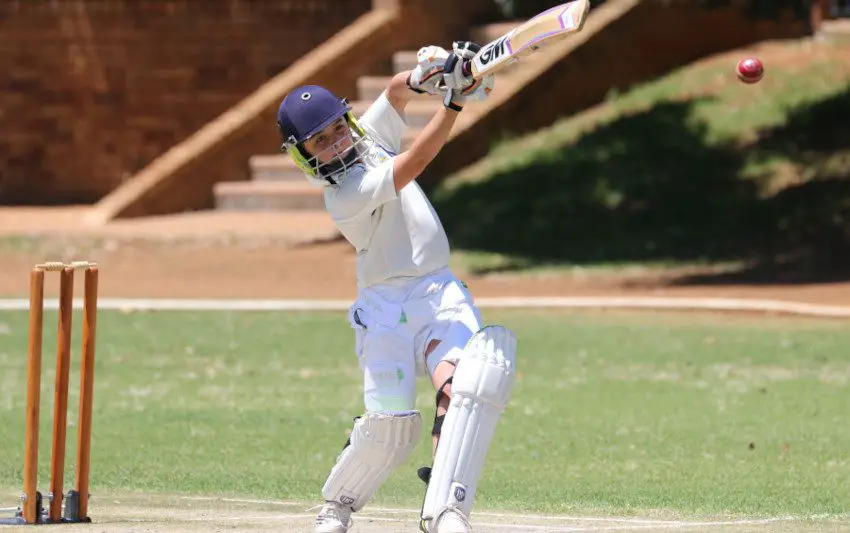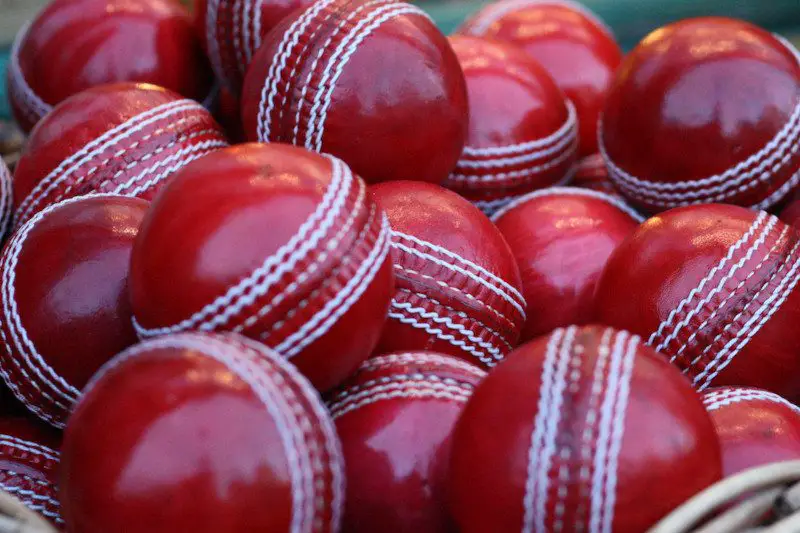Table of Contents
We know that every format of cricket has natural breaks. In test matches and other first class cricket games, the sides will pause for lunch and tea. There is also a break at the end of the day, before players reconvene the next morning.
Limited Overs games are much shorter, and the only scheduled ODI and T20i break times come at the end of each innings. Test matches break between innings too, but how long should each inning break time be?
Test Cricket

The answer to the question of break times varies depending on the format of the game. The innings break time in test cricket will differ from the 50-over form, and there will naturally be more breaks of this kind in the longer game.
Test cricket is the oldest international format so we’ll start here. Each team gets a maximum of two innings to bat, and when a final wicket falls or a declaration is called, there is a break in the game or the match comes to its natural end.
Under the laws of cricket, that break should last for exactly ten minutes. That should give the players enough time to change from fielding to batting gear and vice versa.
The only possible exception to this rule lies when the innings closes just before another break such as lunch or tea. If the innings ends within ten minutes of one of the scheduled breaks, the umpires will call time. The players, will then take lunch or tea, or stop for the close of play.
The innings will resume at the scheduled time, after the natural break in play.
While we’ve talked about test cricket in this first section, the rules above will also apply to domestic first class cricket all over the world.
One Day Internationals
The ODI break time should also apply to List A cricket around the world. Any international or domestic competition that has a 50 Overs per side format, should follow the same rules.
Each side has that maximum of 50 overs to bat, and if the innings reaches its full allocation, the innings break is likely to last for 45 minutes. When you ask how long is the innings break in ODI cricket, there is, however, some flexibility on this point.
Depending on the competition, you may see 40 minute breaks put in place subject to any agreements between the umpires and the two teams.
The innings break time in ODI cricket may also depend on the weather. If rain or other external conditions have reduced the number of overs that each side will face, the break may be much shorter. If, for example, the teams get to play 25 overs each, the inning break could be reduced to 15 minutes, or even ten minutes.
There may be other occasions where the break time changes. If a team is bowled out very cheaply in a short space of time, the umpires may delay the 45 minute break. Instead, there may be a quick, ten minute break between the two innings, and the second innings will take place straight away.
Later in the game, at an agreed point between the umpires and the two teams, the 45 minute break will then be taken. It’s a chance for the teams to have meals and any treatment before they go back out onto the pitch. As this is a longer form of One Day cricket, there is a need for an extended break, but it makes sense to delay it if the first innings is much shorter than planned.
In summary, when you ask how much break time in ODI cricket each team receives, the strict answer is 45 minutes. However, as we have seen, there can be changes to this rule depending on the circumstances of the game.
T20 Cricket

T20 cricket is meant to be fast-paced with little delays in the game. With that aim in mind, the format matches test cricket with just a ten minute break between innings. Once the initial batting side’s innings comes to an end, there will be ten minutes for the teams to turn around and the second innings to resume.
Unlike One Day International cricket, the T20 break time is fixed, and there should be no flexibility. Even if a side is bowled out early, there will be that ten minute turnaround for the batting and bowling teams to change and get ready.
There is a slight possibility that the break may be shorter if there has been some bad weather around. For example, if the game is reduced to the minimum of five overs per side, it’s possible that the umpires and captains may agree on a five minute break. T20 cricket needs to keep moving, so there is that chance to be flexible, but ten minutes is normally sufficient.
Other Formats

The Hundred
Cricket is constantly evolving and the modern day has produced a number of different formats. They’ve yet to take off on a global scale, but it’s worth looking at some of these, and asking how long the innings break is for each one.
T10 cricket is a popular form of the game in some countries. It largely follows the process of T20 cricket, except that each side receives a maximum of ten overs. The rules on the innings break may vary between competitions, but generally, the T10 cricket innings break time should last for ten minutes.
In England and Wales, The Hundred enjoyed its debut season in 2021. It’s an unusual format as it doesn’t involve conventional overs and instead, each team receives a maximum of 100 balls in five-ball ‘sets.’
In another move away from T20 cricket, The Hundred also has a 15 minute break between innings.
The only other format I can think of is the 6ixty from the Caribbean. There are 60 balls available to each side, so this is similar to T10 cricket, but with many quirky rule changes. I’ve yet to find any confirmed information relating to innings breaks, but as the shortest form of the game, it’s likely to be ten minutes again. As of 2025, those are all the formats that are currently running.
Unless there are exceptional circumstances, the minimum inning break should last for ten minutes. Members of the fielding side who have just left the field will need that time just to put their pads, batting gloves and other equipment on.
Similarly, the fielding side will need to prepare, and the wicket keeper needs time for pads, gloves, and the rest.
Why Do We Have Innings Breaks in Cricket?

We’ve mentioned some of the reasons why cricket has breaks between innings. In test and first class cricket, there is a need for players to change from fielding to batting mode. Batters have to put on pads, gloves, a box, a helmet and any other protective equipment that they need to face the opening bowling attack.
The fielding side also have to get properly ready. The opening bowlers may have been batting when the last wicket fell and the 10 minute break began. In those circumstances, they have to take off their batting gear, put on their bowling boots and anything else they need.
Breaks are necessary for the umpires too. When an innings come to a close, they have to change the old ball and provide a new one when the game commences. When you think about all the things that need to be done, you might ask whether ten minutes is enough.
For the longer breaks for lunch, tea and the breaks between innings in limited overs cricket, there is more time for players to take on refreshment and to get any treatment for niggles that they picked up on the field. The change of ball, and the changes of equipment will also be undertaken, but these will happen at a much more leisurely pace.
Overall, when you ask about the inning break time, this will depend on the format of the game. Ten minutes is standard across test matches and T20s while 45 minutes is available for ODI cricket. There is some flexibility in each case for certain circumstances which I’ve outlined here.



